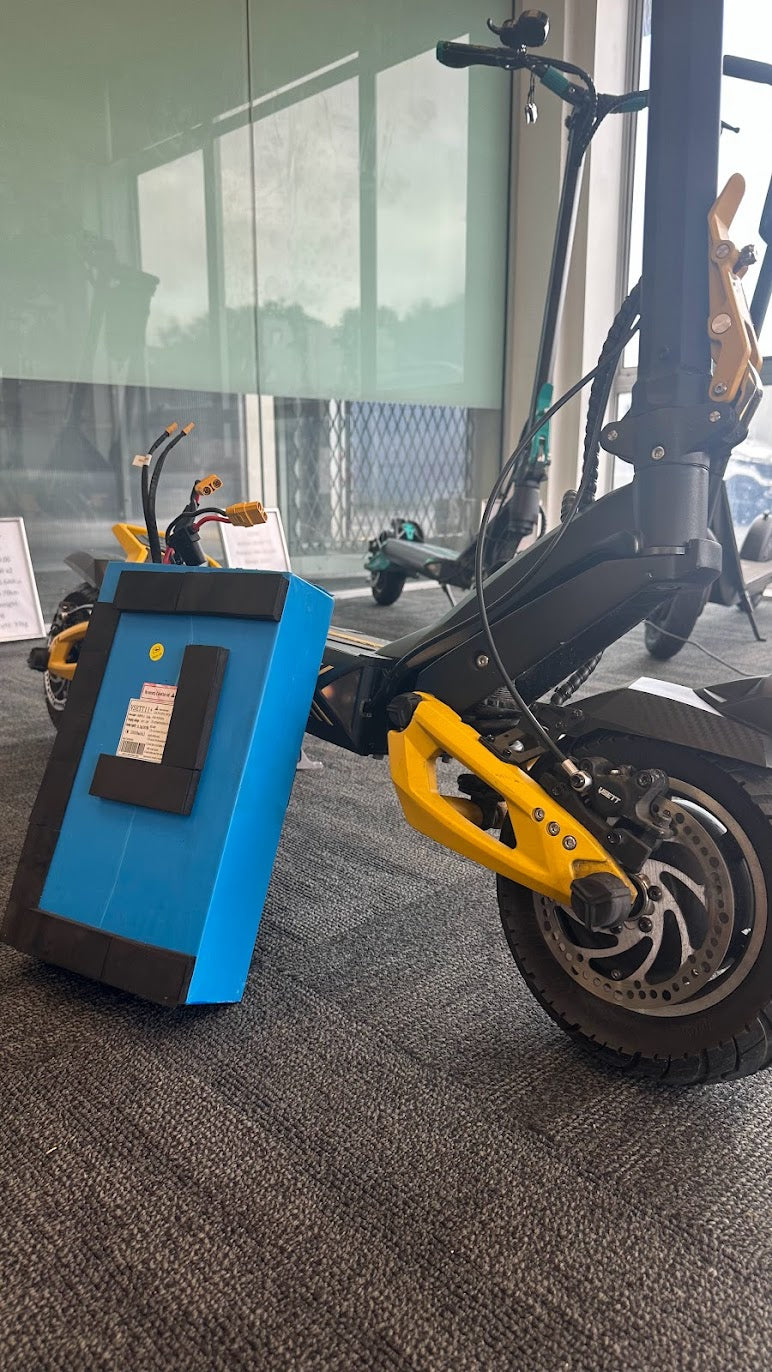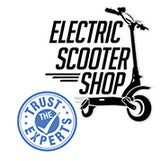
LITHIUM-ION BATTERIES AND SHARKS ATTACKS
Not a headline for an article as you might expect, but there are some parallels, so read on.
Crackling like small-arms gunfire, miniature rockets blew fragments of sizzling, fizzing casings high into the evening sky.
An enemy contact in a war zone? No, it was a couple of scooter technicians experimenting with lithium-ion battery destruction through thermal runaway.
Quite the show it was. Thermal runaway is where the chemical composition of the battery has broken down internally, and the elements present are mixing and combusting.

There’s no stopping it, as it’s not a traditional fire and spraying water will make it worse rather than better in many cases.
With Lithium-ion batteries, now omnipresent in vacuum cleaners, power tools, phones, and of course e-bikes and e-scooters, you’re dealing with potentially dangerous items.
But the keyword here is potentially, and they can and usually do function in a very safe and benign manner.
Let’s see how we can keep them that way.
The pivotal question is quality. Li-ion batteries contain all the elements required for self-combustion when unstable, and high-quality construction is essential to ensure that stability.
Quality brands use quality battery cells, and the batteries themselves don’t come cheap (for a good one).
So, only buy a known international brand, sold internationally and certified to international safety standards, meaning the battery, and the charger, have been tested and deemed safe.

BATTERY CARE
Li-ion batteries don’t enjoy stress.
Overcharging stresses them. Fully discharging them stresses them.
They’re happiest in the middle, above 20% charged and below 80% charged.
That’s why your new product doesn’t arrive fully charged, and why you should store any battery-powered product at no more than 80% charge for a prolonged period.
Ideally, set a timer on your charger to turn off before the battery reaches 100% charge. A charger should turn itself off when a battery reaches full charge, but by pre-empting that at 80 to 90% you’ll extend massively the life of your li-ion battery.
We expect soon to see chargers with the onboard option to perform an 80% charge. Not yet, though, so use a socket timer. Your battery will thank you for it.
CHARGER USE
You’ll notice your battery charger gets warm as it completes its charge cycle up to 100% charged.
This is because it is overcoming the resistance in the battery to jamming that last 10% of charge into those nearly full cells.
This is where the most stress on the cells and the highest risk occur.
Of course, 99.99% of batteries will still perform this function safely. It’s what they’re tested to do, and your charger contains an off switch to turn off when the battery communicates it’s fully charged.
But it’s also where the highest degradation of the cells occurs and switching off before the 100% charge is reached will extend the battery’s lifespan, as well as reduce charging risk.
OTHER MEASURES
Charge in a well-ventilated area and on a hard, conductive surface (not a carpet or rug).
Charge away from exits (you don’t want to be trapped in the event of a fire) and charge where and when you can remain aware of the charging procedure.
Switch your charger off when charging is complete, and always use the correct charger for your device.
The charger is matched to the battery voltage. A mismatched voltage will destabilise the battery cells.
Always buy the manufacturer’s genuine original charger if you need a replacement.
SPOTTING ISSUES
Batteries can be damaged by water, shock/ impact, and poor charging practices with incorrect chargers.
Look out for the signs and don’t charge if you notice any of these. Beware of a misshaped battery.
Swelling and expansion of the cells is an obvious sign of damage. Don’t charge this battery, it is unsafe and unstable.
The battery may well be inside a case, however, so this may not be obvious immediately.
Funny smells. If you notice an unusual smell, that could be a lithium leak. The battery cells are damaged.
Smoke. Unsurprisingly this is a dead giveaway that a battery has entered ‘thermal runaway’, where it’s selfcombusting.
If it’s safe to do so, move the device quickly away from any living areas into an open space where the reaction can complete without causing damage. Stay well back.
Noises such as hissing/popping coming from the device (almost always accompanied by smoke and smell).
This reaction is at the ‘about to blow’ phase and is very dangerous. A serious malfunction has occurred, and you should get far away immediately.
SHARK ATTACK?
How many people are in fear of a shark attack?
A great many, right.
It’s terrifying, deadly, and grisly, the stuff of nightmares.
But how many shark attacks occur? Well, in 2002 it was 57 globally.
So, the chance of it being you is infinitesimally small, and a road accident is far more likely.
Lithium battery fires require the same level-headed approach, and perhaps a similar level of sensible caution.
Follow the do’s and don’ts, and almost 100% of the time you can operate in complete safety.
Multiple millions of li-ion batteries are on charge right now in the world, and 99.999% will be perfectly fine.
So, much like shark warnings, listen to the lifeguards, read the manuals, follow the instructions, and go about your day.
Originally posted in the September 2023 EV's and Beyond Magazine.
Article by Jonno Leonard, owner of the Electric Scooter Shop.

Leave a comment